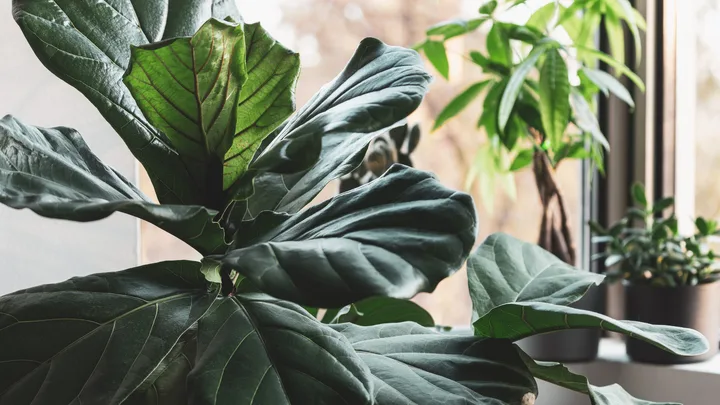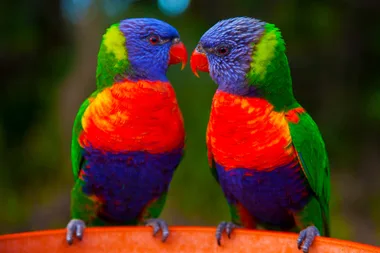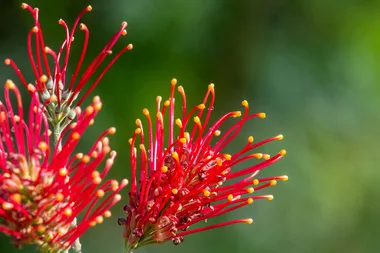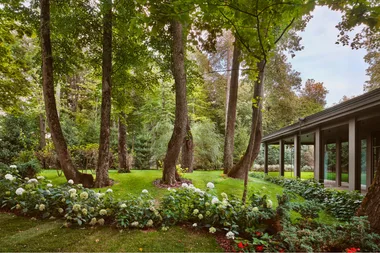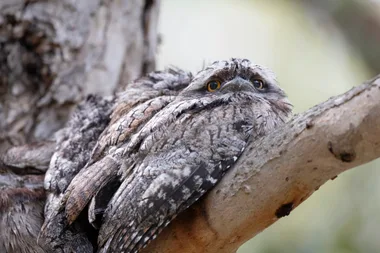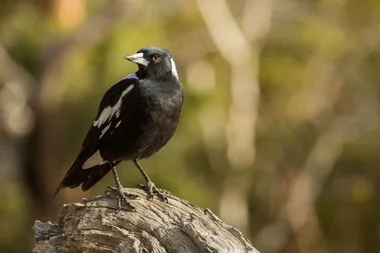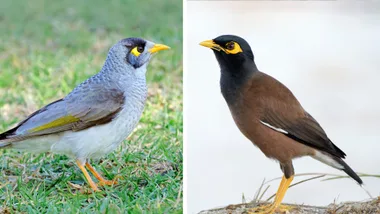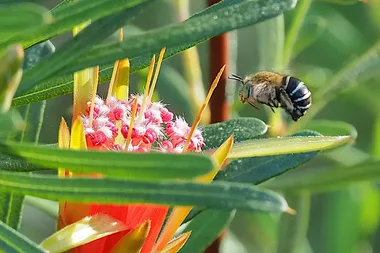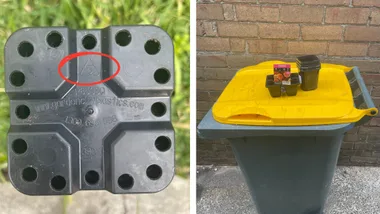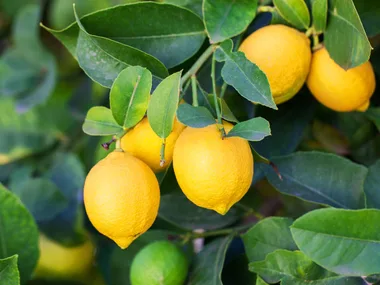Aroids are a group of tropical plants from the Araceae family, known for their striking foliage, adaptability, and sculptural beauty. If you’ve ever owned a Monstera, Pothos, Philodendron, or Aglaonema, you’re already a fan — even if you didn’t realise they’re all aroids.
What are aroids?
Aroids developed to grow on rainforest floors and have adapted to thrive in low light, making them ideally suited to indoor environments. They use their aerial roots to climb trees in search of dappled sunlight. In your home, substitute a tree with a simple, stylish ladder and watch aroids clamber up, adding a brilliant vertical feature to your rooms!
These plants are more than just pretty leaves; they’re great adapters. For example, the holes in a monstera leaf likely evolved to reduce wind resistance and allow rainwater to pass through the foliage to the roots below.
While some aroids do flower — like the peace lily with its elegant white spathe — most are grown indoors for their lush, dramatic leaves. Others, like the corpse flower, are better admired from afar… preferably outdoors.
Types of aroids
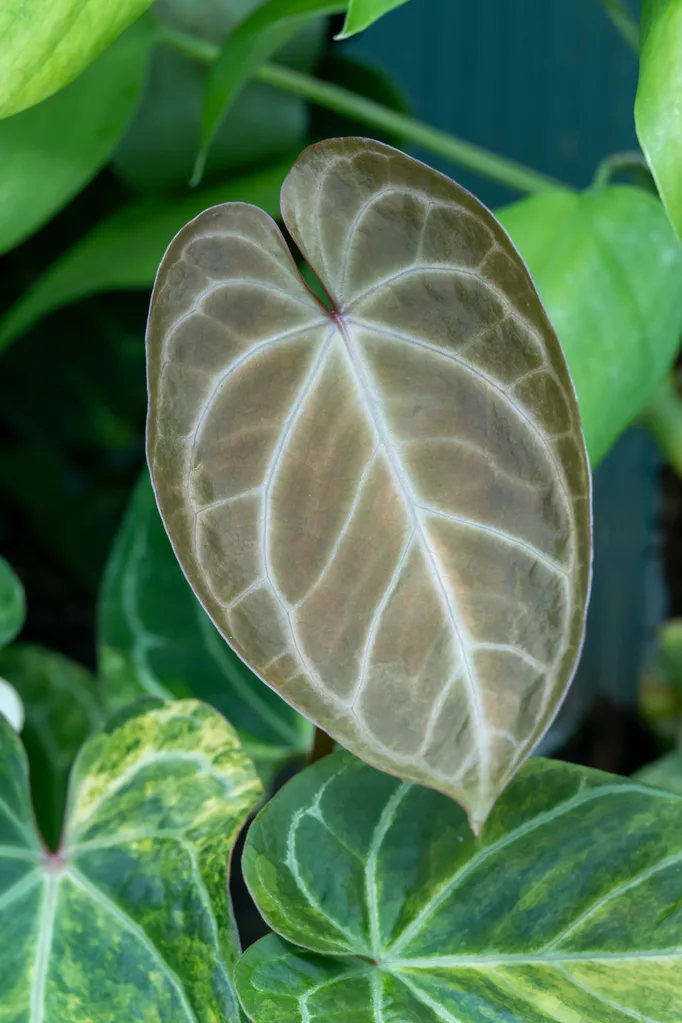
ZZ Plant (Zamioculcas zamiifolia)
An ultra-tough, low-light aroid known for its glossy, deep green leaves and tolerance of neglect.
Famous for its large, fenestrated (split) leaves, Monstera adds a bold, tropical vibe to any room.
Pothos (Epipremnum aureum)
A fast-growing trailing plant with heart-shaped leaves, perfect for shelves and hanging baskets.
A stunning hybrid with deeply lobed leaves and striking variegation in creamy yellow and green.
Anthurium magnificum x regale
This hybrid is prized for its enormous, velvety foliage and dramatic veining—pure gold for plant collectors.
Anthurium (Growing Grounds Hybrid)
A unique hybrid variety with lush, ornamental leaves—bred for both beauty and resilience.
Alocasia melo
Known for its thick, textured foliage and silvery-green colour, this compact Alocasia adds sculptural charm.
Variegated Anthurium forgetii x hoffmannii x Growing Grounds Hybrid
This rare hybrid features intricate variegation and round, almost orb-like leaves, a true showstopper.
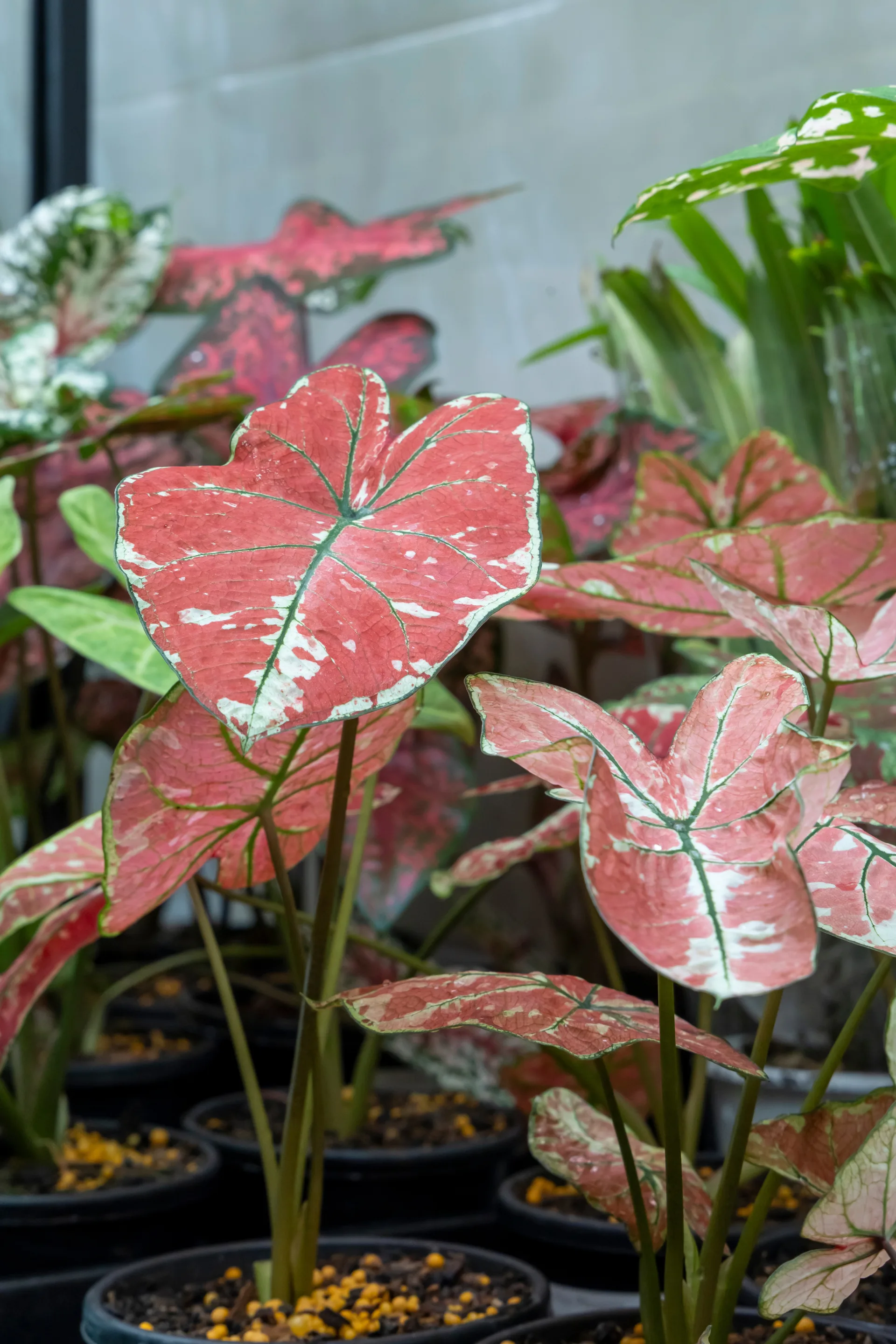
Caladium ‘Fire Phoenix’
A brightly coloured, heart-leaf caladium with fiery pink and red tones, ideal for seasonal foliage pops.
Anthurium veitchii (Narrow Form)
Nicknamed the “King Anthurium,” this plant has long, corrugated leaves that create a regal, cascading effect.
Syngonium ‘Red Spot’
A charming aroid with arrow-shaped leaves speckled in pink and cream—perfect for colour lovers.
Philodendron brandtianum
A vining philodendron with silvery variegation across olive-green leaves, great for trailing or climbing displays.
How to propagate an aroid
Aroids are easily propagated in water from stem cuttings. Simply cut below a leaf node, place in clean water, and roots will appear between 2–3 weeks, ready for planting into potting mix.
Ariods care tips
These plants are typically native to the understories of rainforests, which means they’re adapted to warm, humid environments with filtered light. Here’s how to keep your aroids healthy and happy at home:
Sunlight
Most aroids prefer bright, indirect light, similar to the dappled sunlight they’d receive under a canopy of trees in the wild. Avoid direct afternoon sun, which can scorch their leaves. Some varieties, such as ZZ plants and Aglaonema, tolerate low-light conditions, making them ideal for dimly lit corners.
Water
Aroids prefer their soil to be consistently moist but not overly wet. Let the top 2–5 cm of potting mix dry out between waterings. Overwatering is a common mistake and can lead to root rot.
Temperature and humidity
Since aroids are tropical plants, they thrive in a humid atmosphere. To keep them happy, mist around the leaves or set a shallow bowl of water nearby. As the water evaporates, it creates a little pocket of humidity just for your plant.
Pests
Watch for mealybugs, spider mites, and aphids. Regularly wipe down leaves and inspect for signs of infestation.
Aroid potting mix
An aroid potting mix mimics the natural growing conditions of aroid plants, which thrive in the wild in well-draining, airy soil. The mix includes perlite, vermiculite, orchid bark, horticultural charcoal, coco chips and pith, which together provide good drainage, water retention, aeration and root stabilisation. 
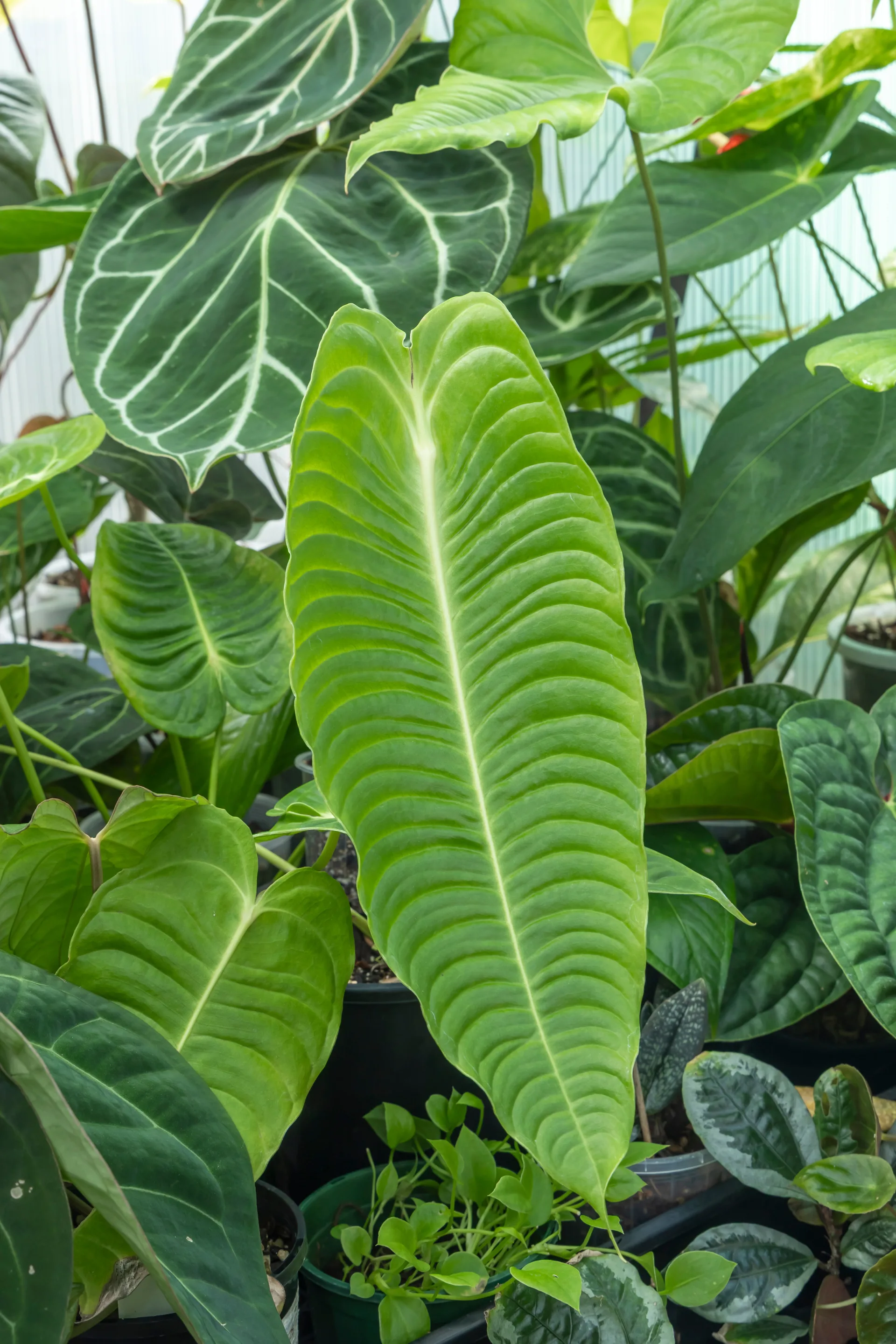
How to make an aroid grow up a pole
Help your aroids satisfy their natural inclination to soar upwards by giving them a climbing frame.
Gather your supplies
- Prop stick
- 100mm pot
- Scindapsus pictus ‘Silver Lady’ or an aroid of your choice
- Aroid mix
- Sphagnum moss
- Hair clips
Here’s how:
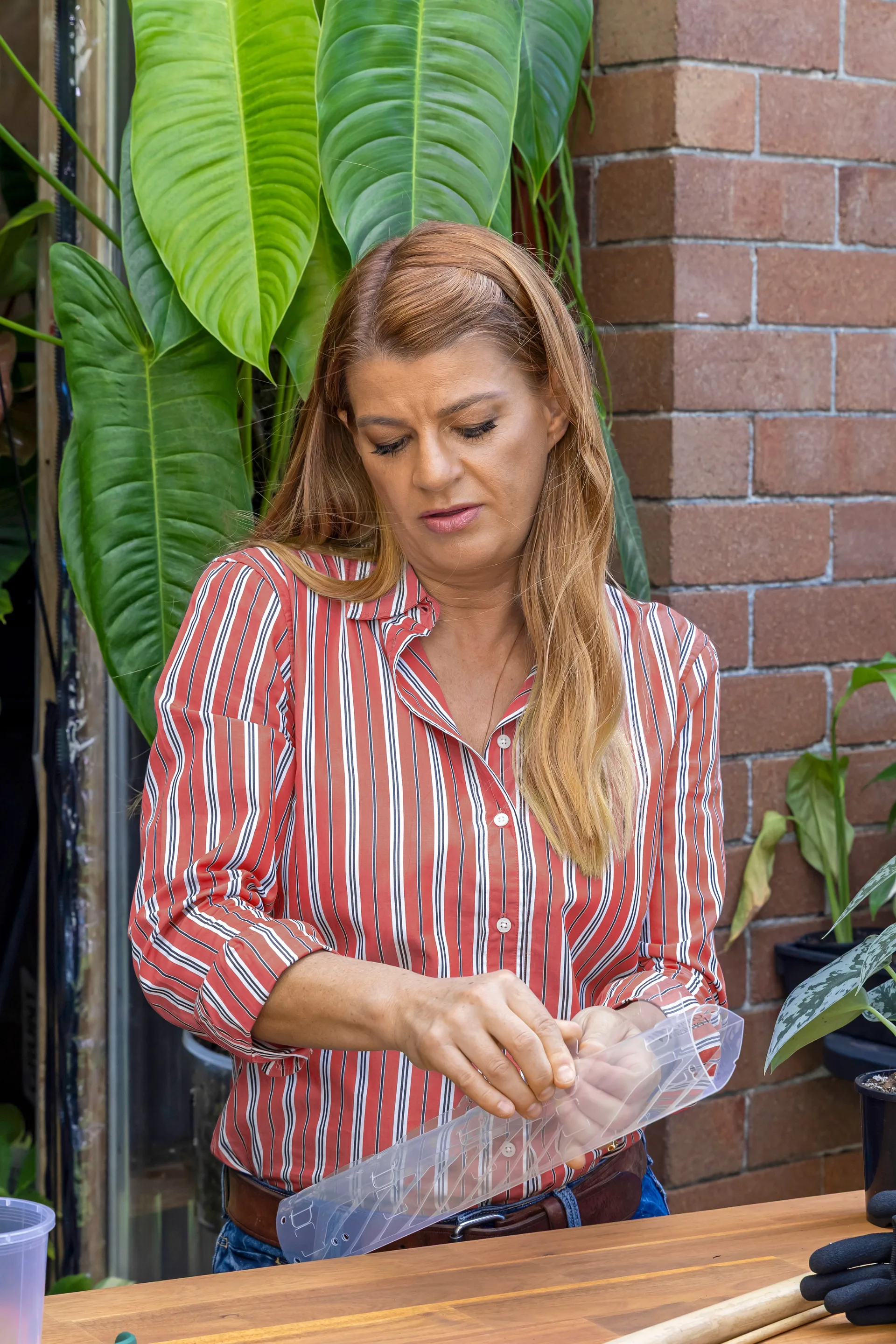
Step 1
Follow the instructions that come with the prop stick. Roll it into a tube and secure its ends.
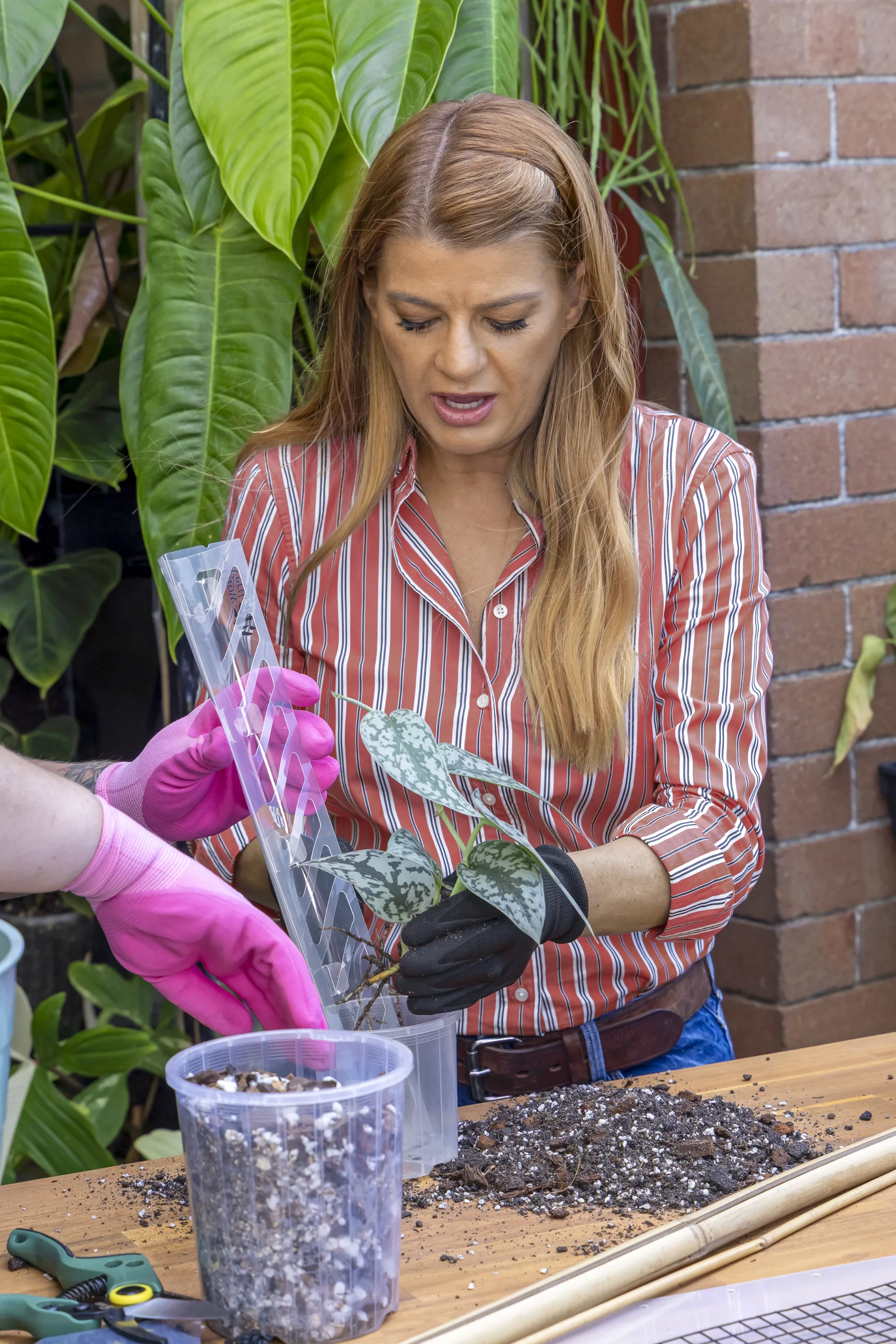
Step 2
Remove the plant from its original pot.
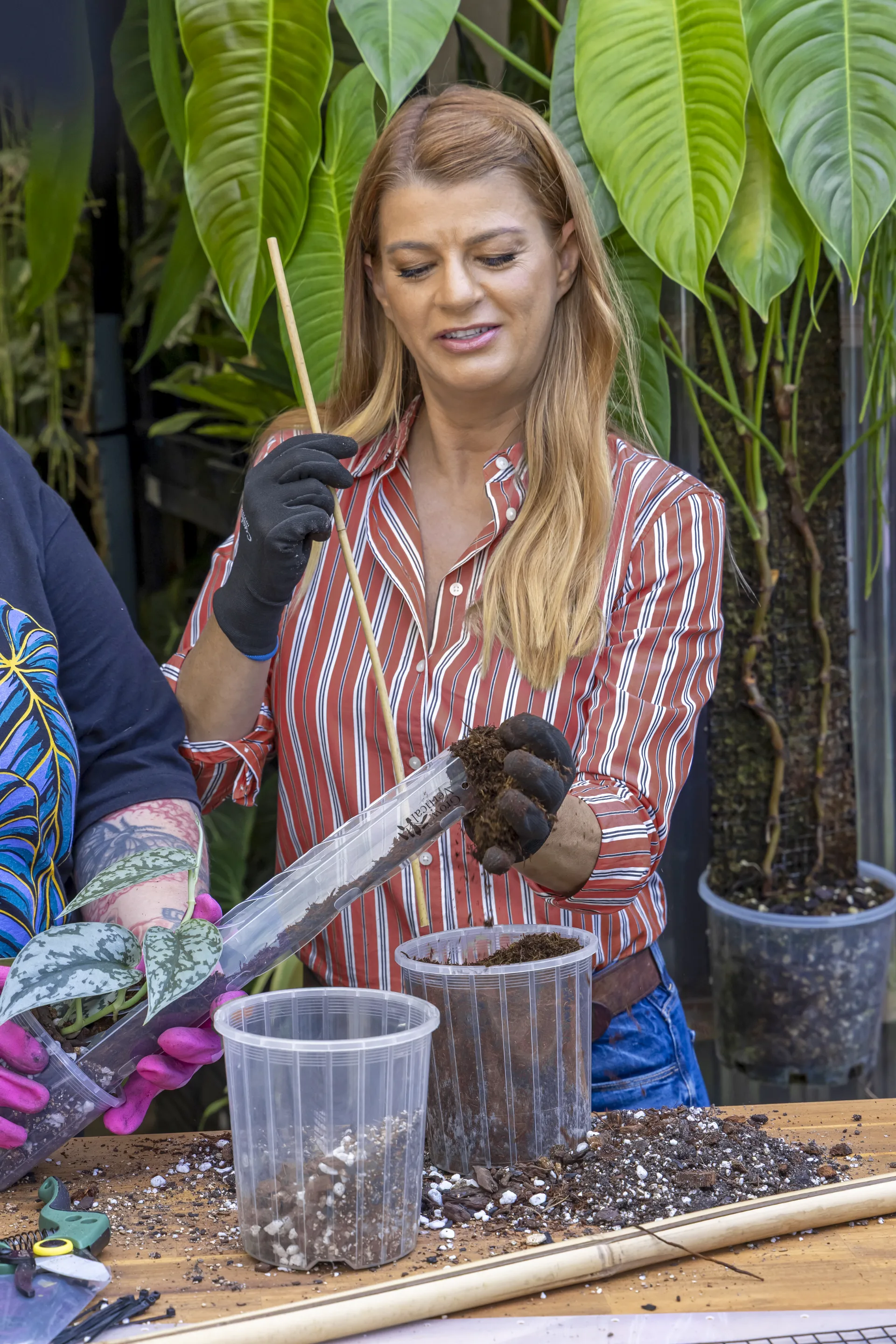
Step 3
Half-fill the 100mm pot with aroid mix. Insert the prop stick into the mix, then gently tuck the plant’s aerial root into the prop stick just above the pot’s rim.
Step 4
Fill the pot with aroid mix and the prop stick with spaghnum moss.
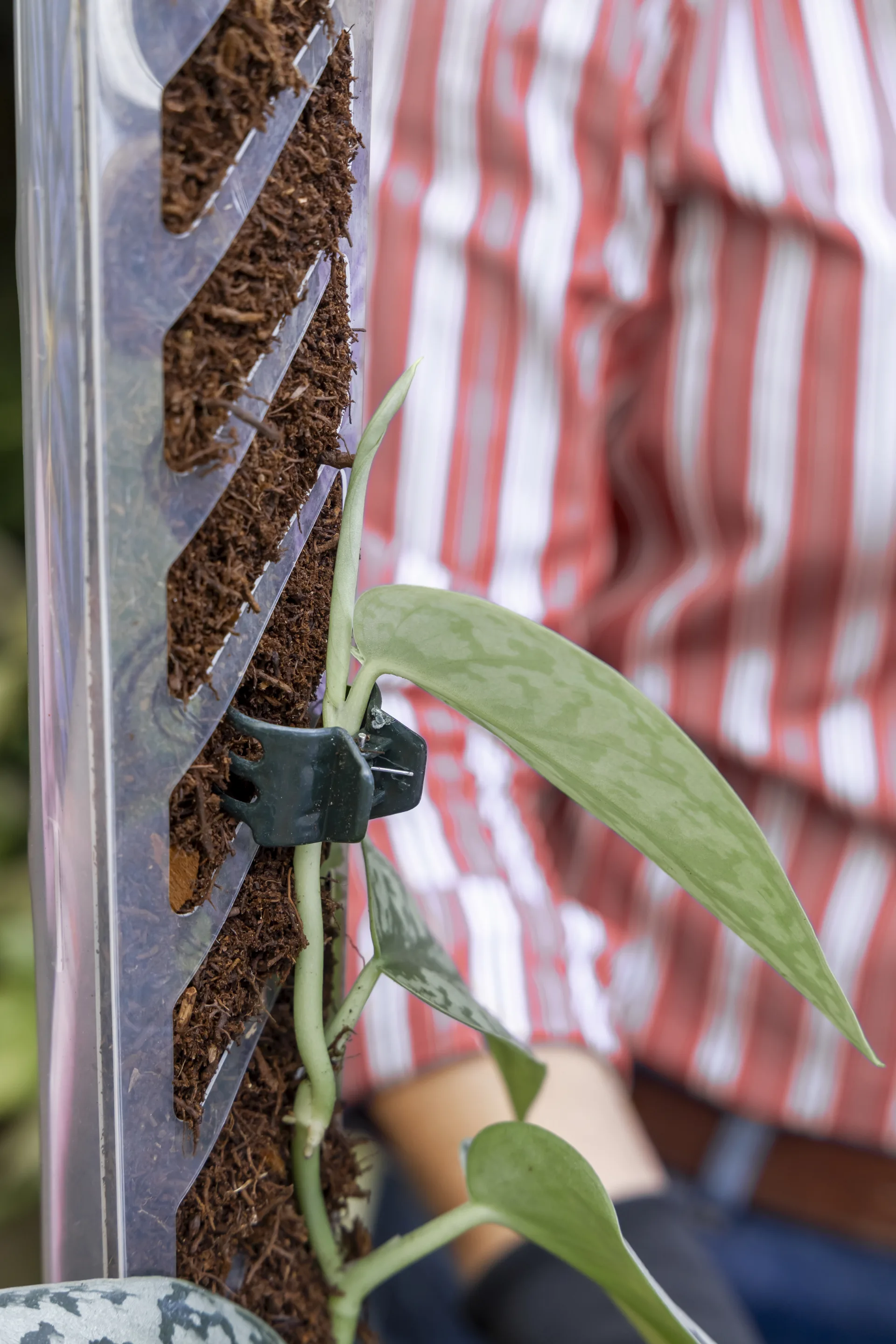
Step 5
To help the plant anchor and climb, temporarily secure an aerial root to the prop stick with a hair clip.
Are aroid plants toxic?
Many aroid plants are toxic to humans and pets if ingested. Most plants in the Araceae family (aroids) contain calcium oxalate crystals, which can cause irritation and swelling when chewed or eaten.
Common toxic aroids include:
- Monstera
- Philodendron
- Pothos (Epipremnum)
- Anthurium
- Dieffenbachia (often called “Dumb Cane”)
- Alocasia
- Caladium
- ZZ Plant (Zamioculcas zamiifolia)
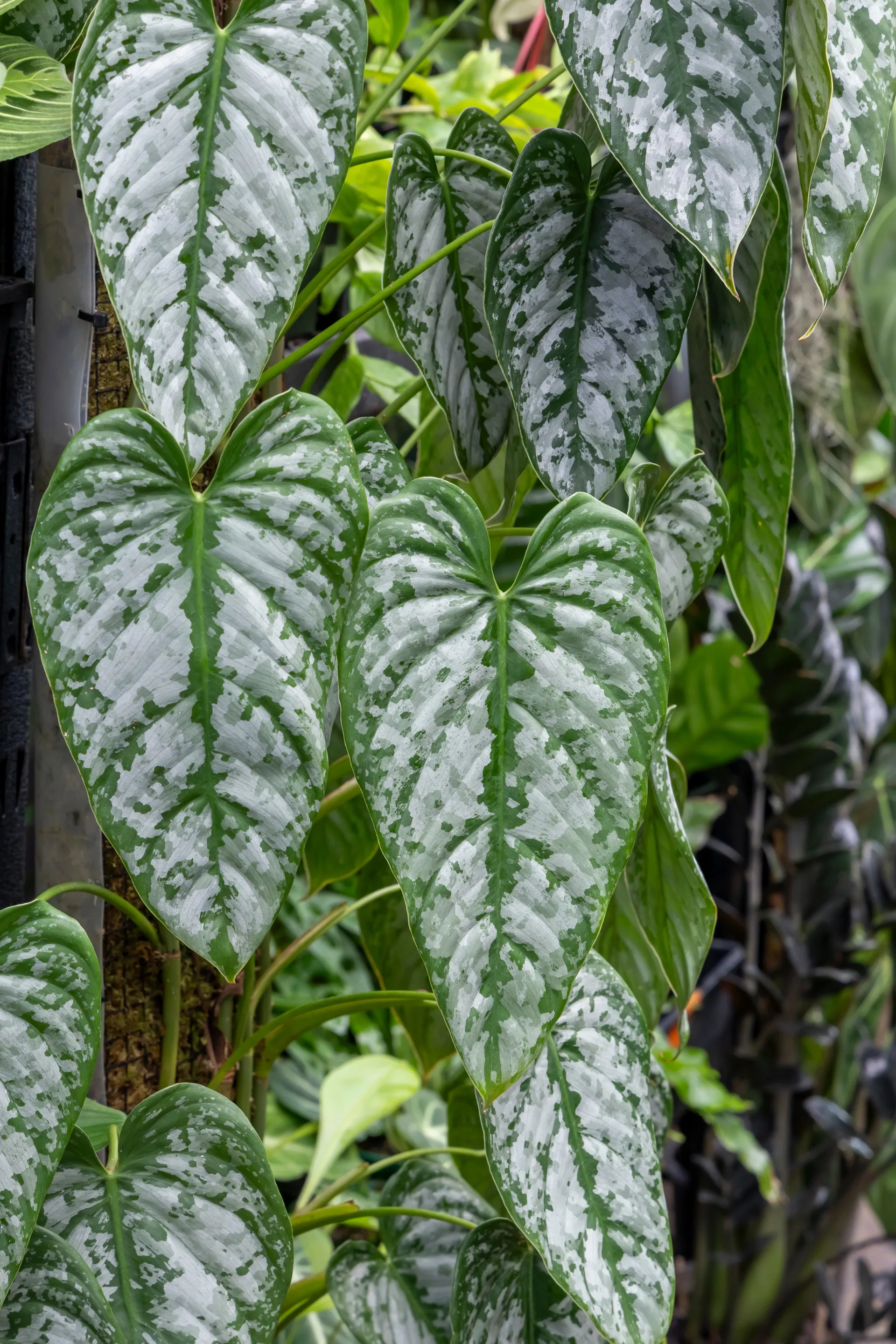
What classifies a plant as an aroid?
Aroids are characterised by their distinctive flower structure, which consists of a spadix and a spathe, and they all belong to the Araceae family.
Are pothos considered aroids?
Yes, pothos (Epipremnum aureum) is a popular aroid known for its trailing vines and low-maintenance care.
What is the rarest aroid?
One of the rarest aroids is Amorphophallus titanum, also known as the corpse flower.
Is Rhaphidophora an aroid?
Yes, Rhaphidophora is a genus within the Araceae family, making it a type of aroid.
